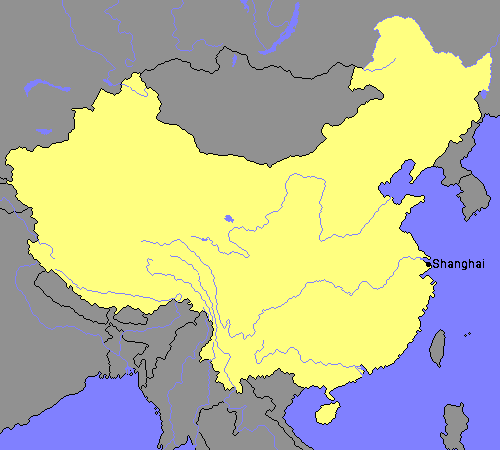
Shanghai: With over 24 million inhabitants, Shanghai is the most populous city in China. It sits at the mouth of the Yangtze River and serves China as a global financial center and operates the busiest container port in the world.
Shanghai has for centuries been an important port and grew in global prominence when the British opened it to international trade in the mid-1800's. Although its global importance diminished following the communist revolution in 1949, reforms in the 1990s has allowed it to re-establish itself as a major global financial and trading center.
The Trip There: Shanghai was this year's host city for CITM (China International Travel Mart 2014), just as Kunming was in 2013. One of Peep's coworkers who traveled with us last year, Dragon, also worked the expo this year. A second gentleman, Jong, who speaks fluent Chinese along with Dragon, made the trip with us as well.
We left Savannakhet in the early afternoon on Tuesday and, following layovers in Bangkok and Hong Kong, arrived in Shanghai where we made it trough customs, collected our checked luggage, and grabbed a taxi to the hotel. By the time we checked in and settled into our respective hotel rooms, it was well after midnight, early Tuesday morning.
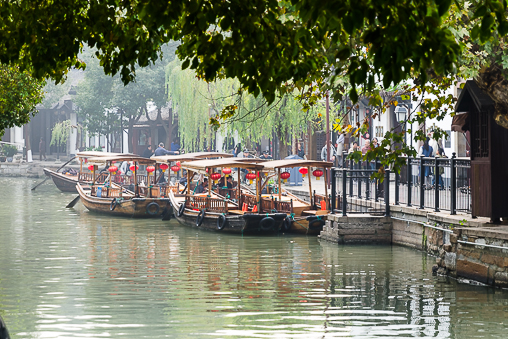
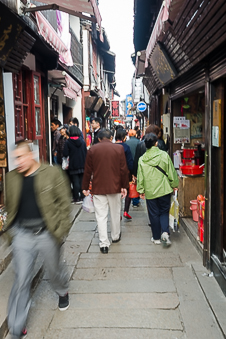
Zhujiajiao Ancient Town: Due to our late arrival the night before, we slept in Wednesday morning and met Dragon for a late breakfast at a diner near our hotel. We then hailed a taxi to take us outside the city of Shanghai to the ancient town of Zhujiajiao. This area, already inhabited for thousands of years but not officially founded as a city until the 4th century, lies where several tributaries enter the Dianpu River and is notable for its Ming and Qing dynasty architecture, narrow alleyways and bridges of ancient stone or wood crossing its waterways.
Once there, we purchased combination tickets to enter eight of the city's notable locations. However, due to our afternoon arrival, we were unable to visit all of them, missing the Handicraft Exhibition Hall and the Y-Art Gallery.
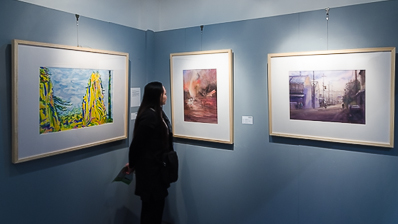
Shanghai Quanhua Art Gallery: Our first stop in Zhujiajiao was at the Quanhua Art Gallery, a two-story building containing all manner of contemporary watercolor Chinese paintings. After spending some time admiring the artwork, we walked a couple of doors down the street to Kezhi Garden.
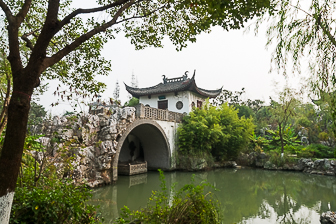
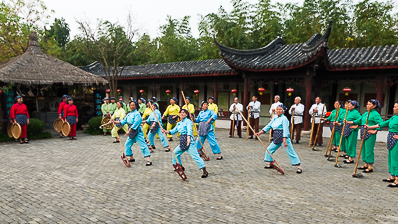
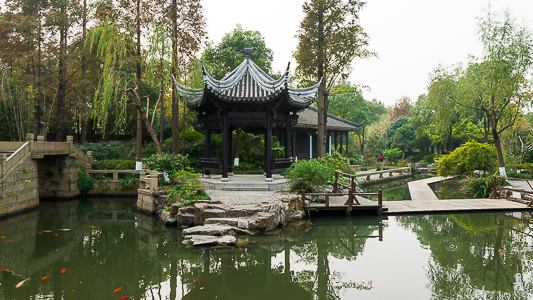
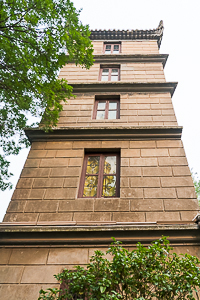
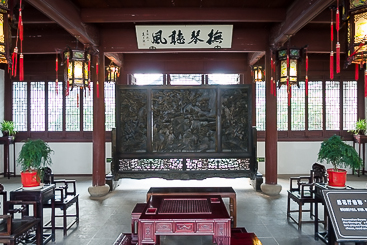
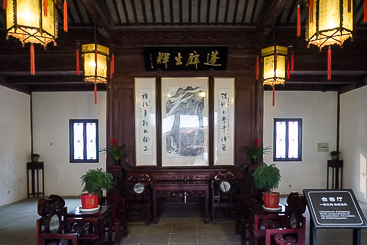
Kezhi Yuan: Kezhi Yuan quite literally means "Study Farming Garden" and was built as a place for study and a place for farming. Construction began in 1912 and took 15 years to complete.
Entering through the exitway to avoid a large tour group in front of us, we strolled along the intertwining paths past many ponds and pavilions before coming upon a garden area, where we saw a group of performers demonstrate some traditional dances, obviously taken from daily farming tasks. Nearby was a herb and vegetable garden.
After the performance, we continued our way along through the picturesque grounds, coming upon another stage, this one with sheltered seating located across a small pond. Located near the performance area stands the tallest structure in old-town Zhujiajiao, a five-story building topped with the Moon View Pavilion.
We next reached a couple of halls located within the gardens, the Recreation Room and the Living Room, before finally leaving the gardens through the main entryway.
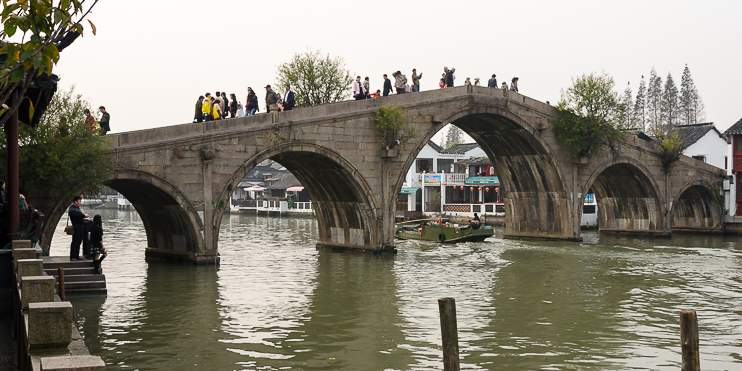
Fangsheng Bridge: Continuing through town we found ourselves crossing the Dianpu River by means of the Fangsheng Bridge, a relic of the Ming Dynasty built in 1571 and still said to be the largest stone arch bridge in Shanghai.
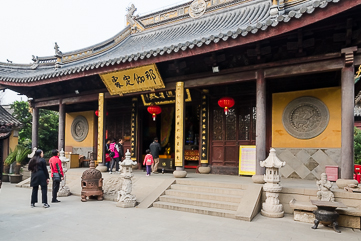
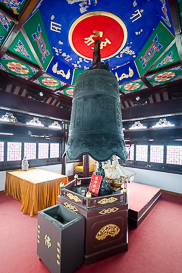
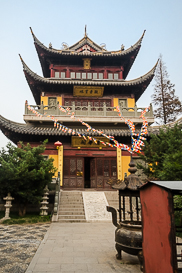
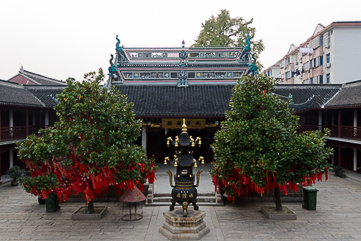
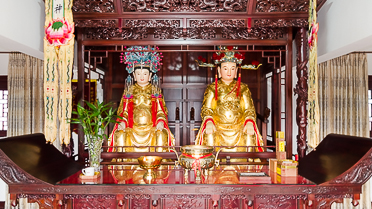
Yuan Jin Buddhist Temple & City God Temple: These two temples are located a short distance from each other, the first founded in 1341 as a place of Buddhist worship and the second a place for Taoists to practice their beliefs, and is notable for its three treasures: an abacus, a Gingko tree and a stage.
While at Yuan Jin we climbed the Bell Tower, where we could overlook the tightly-packed town below and Peep took the opportunity to ring the six-foot tall bell hanging there.
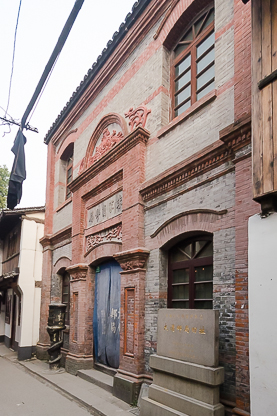
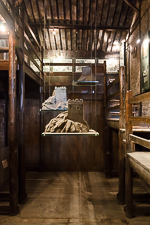
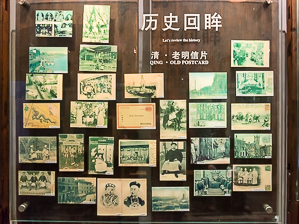
Great Qing Post Office: Built in 1903, this was one of thirteen major post offices constructed in Shanghai during the Qing Dynasty, China's last imperial dynasty, and the only surviving one in all of eastern China. It was built on the riverside and boats were used for transporting the mail due to the poor quality of roads at the time.
On the upper floors is a history of the post in China beginning with military messengers on horseback, plus displays of letters written on bamboo and antique postcards of old Shanghai.
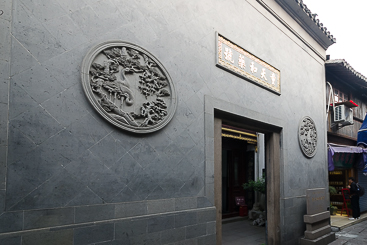
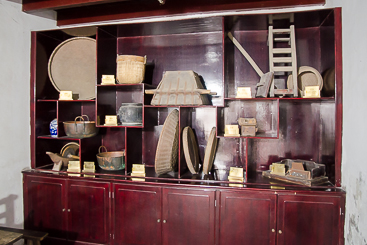
Tong Tian He Chinese Pharmacy: This pharmacy was built in the late 1870's and served as a dispensary of traditional Chinese healing herbs. None of the herbs were on display during our visit, but some of the implements used in their preparation were on display at the back of the shop.
Humanistic Museum: Although not part of our ticket, we entered the Humanistic Museum, which had on display over its two floors paintings depicting scenes of Zhujiajiao, its famous people, rituals and traditions, as well as its daily life.
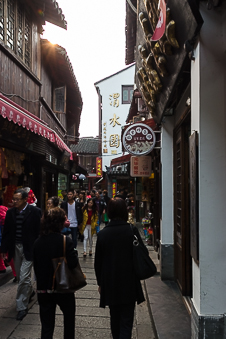
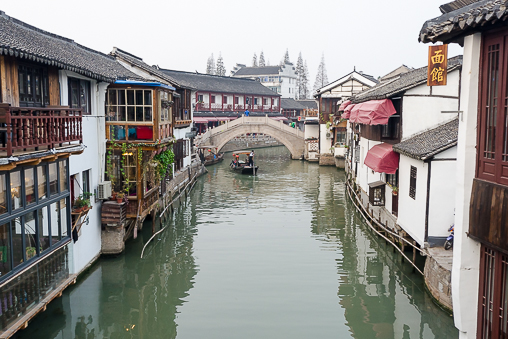
Return to Shanghai: It was now nearly 5:00 p.m. and all the places of interest were closed. Still early, we decided to catch a cab back to downtown Shanghai, where we could meet with the fourth member of our travel party for dinner. We had difficulty finding a public cab, but were able to find a private driver to make the trip for less than it cost us to get to Zhujiajiao.
Change of Plans: We ran into rush-hour traffic on the way back, inching along on the over-crowded streets, when Peep started feeling ill, so we asked our driver to take us directly to the hotel instead. Using an old GPS he got lost but, after reorienting himself, did manage to get us back to the hotel safely. The ride back took a total of three hours, thrice the amount of time it took us to travel to the ancient town earlier in the day.

